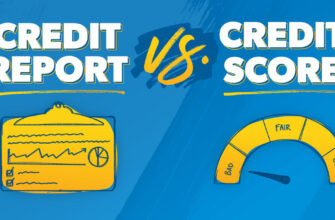Credit from Latin crēdō (“I believe”). Credit is the capital in the form of money, provided in the loan by its owners on the terms of repayment for a fee in the formation of interest and urgency.
Credit is a movement of loan capital, the provision of money or goods in debt, usually with the payment of interest; an integral element of commodity-money relations. The emergence of credit is directly related to the sphere of exchange, where the owners of goods oppose each other as owners who are ready to enter into economic relations.

Due to the seasonality of production, uneven supplies and other things, there is a discrepancy in the time of creation and circulation of products. Some subjects have a temporary surplus of funds, while others have a lack of them. This creates the possibility of credit relations, that is, credit resolves the relative contradiction between the temporary subsidence of funds and the need for their use in the economy.
A loan is a movement of capital, i.e., money capital provided in a loan. The loan provides the transformation of money capital into loan capital and expresses the relationship between lenders and borrowers. With its help, the free monetary capital and income of enterprises in the private sector and the state are accumulated, turning into loan capital, which is transferred for a fee for temporary use. Capital cannot physically, in the form of means of production, be transferred from one branch to another. This process is usually carried out in the form of a movement of monetary capital.
So, a loan is an economic relationship that arises between a lender and a borrower about the value transferred for temporary use.
In a market economy credit performs the following functions:
- accumulation of temporarily free funds;
- redistribution of funds on the terms of their subsequent return;
- creation of credit instruments of circulation (banknotes and treasury notes) and credit operations;
- regulation of the volume of total cash turnover.
The main principles of the loan are repayment, urgency and payment.
Pros and cons of the loan
To understand whether to take out a loan you need to compare all the pros and cons for the borrower.
Against Loans
- you give more than you get
- late payments lead to fines/penalties
- with a secured loan you can lose your property
- if there are debts, they can restrict travel abroad
- having to pay off debt causes stress
- because of the loan you have to save/reduce the standard of living
- it is difficult to change jobs/quit because of the need to pay every month
Total-90% of the problems with the loan are related to the need to make a certain amount every month. Uncomfortable? Inconvenient. But let’s take a look at the pros.

For Loans
- improving the quality of life without having to save
- formation of a positive credit history even with a small loan (so that on a “rainy day” there is an opportunity with a high percentage of approval to apply for a large one)
- savings through the purchase of “here and now” at the discounted/promotional prices
- reducing stress about not being able to live in comfort zone, get the necessary education, etc.
Thinking about whether to take a loan, you need to understand that this is an opportunity to dramatically improve housing/living conditions, buy goods at a reduced price. By the way, often the benefit of the discount exceeds the bank’s interest rate.
Credit can have an active impact on the volume and structure of the money supply, payment turnover, and the speed of money circulation. Calling to life various forms of credit money, it provides in the period of market relations the creation of a base for the accelerated development of non-cash payments, the introduction of their new methods. All this will help to save circulation costs and increase the efficiency of the market as a whole.
Thanks to the loan
Thanks to the loan, there is a faster process of profit capitalization, and, consequently, the concentration of production. It can also play a significant role in the implementation of state and municipal property programs based on the corporatization of enterprises. The condition for placing shares on the market is the accumulation of significant monetary capital and their concentration in the credit system. The credit system represented by banks takes an active part in the issue and placement of shares.
Credit stimulates the development of productive forces, accelerates the formation of sources of capital for the expansion of reproduction based on the achievements of scientific and technological progress.
By regulating the access of borrowers to the loan capital market, providing government guarantees and benefits, the state directs banks to preferential lending to those enterprises and industries whose activities meet the objectives of implementing national programs of socio-economic development. The state can use the loan to stimulate capital investment, housing construction, export of goods, and development of backward regions.

Without credit support
Without credit support, it is impossible to ensure the rapid and civilized development of farms, small businesses, and the introduction of other types of entrepreneurial activity in the domestic and foreign economic space.
The credit system is primarily represented by banking, consumer, commercial, state and international credit. All these types of credit are characterized by specific forms of relations and methods of lending. These relations are implemented and organized by specialized institutions that form the credit system in the second (institutional) sense. Banks are the leading link in the institutional structure of the credit system..








